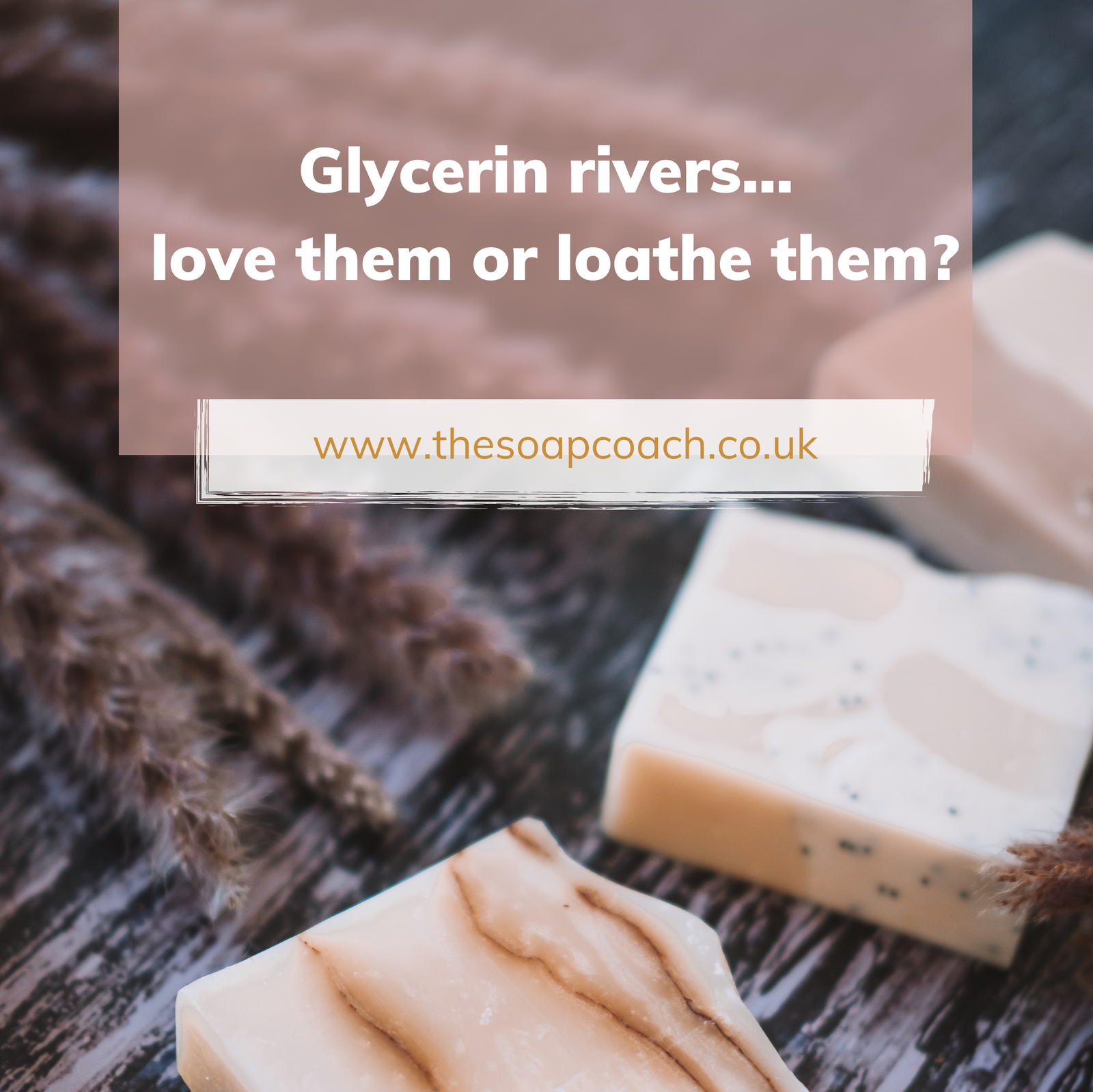Glycerin rivers - love them or loathe them?

What are these odd looking lines in my soap and what are glycerin rivers?
Silvery or white looking lines and crackles running through or around your soap can be quite alarming, leading you to think something is wrong with it. Is my soap safe to use? What has caused it and how can I prevent it happening again in the future? Welcome to the world of glycerin rivers.
Glycerin is a naturally occurring by product of the saponification process which is, in part, what makes hand made soap so wonderful. It is also a humectant which means it attracts moisture which can only be good for your skin and is certainly nothing to be worried about.
Do glycerin rivers ruin my soap?
I am a firm believer that soap is a natural, handmade product and that perfection is absolutely not necessary. Glycerin rivers are purely aesthetic and no, they do not affect the use of your soap at all (although they can cause it to wear unevenly as the rivers are slightly softer than the rest of your bar) but I do appreciate that if you have spent a lot of time creating an intricate pattern or design you may not want the over all effect to be spoilt.
How can I avoid glycerin rivers in my soap?
There are a number of factors which seem to increase the risk
As it happens, I did not experience glycerin rivers until about 3 years into my soap making life. This is partly because I started out hot process soap making and this does not create the same issue. My first brush with them was only when I started using titanium dioxide to lighten some of my soaps. In fact the only time I have them is when I am using titanium dioxide so it is clearly the biggest culprit in my eyes. If you still want a lighter coloured soap without the TD then you will need to look at either a different recipe with white base oils, try using something like zinc oxide, (not as effective as TD but worth a try) or you can buy white micas.
Water reduction - I use 33% water in most of my recipes as it gives a nice easy to work with batter for beginners in the soap making workshops but you can drop your water % right down to 27/28% or even down to 25% and this will help reduce the risk of glycerin rivers.
Use oil rather than water to disperse your colourants (including TD) in before mixing into your soap batter.
Temperature is a big factor, glycerin rivers are caused by the soap heating up as it saponifies and causing the glycerin to pool in one place. Try reducing the temperature of your oils and water to below 100 degrees fahrenheit or even try room temperature. Avoid gel phase by popping your soap in the freezer after moulding.
Or 'embrace the rivers'. As I do. Beauty is, without a doubt, in the eye of the beholder.

If you have mastered the basics of soap making and would like to learn more I teach intermediate soap skills via zoom from time to time. Milk soaps and salt soaps are good options to begin with. Take a look here to see if any are coming up in the future. I would love to have you join me if you can.
Keri
Leave a comment